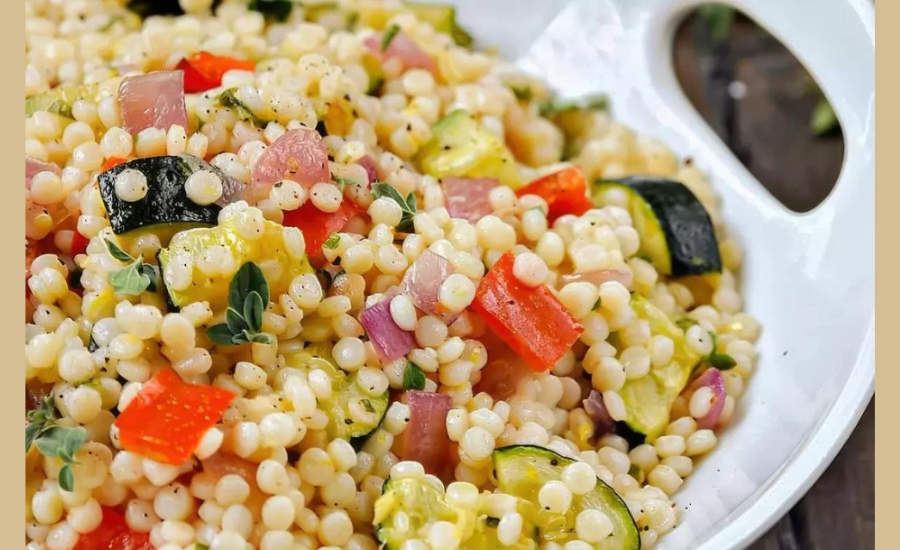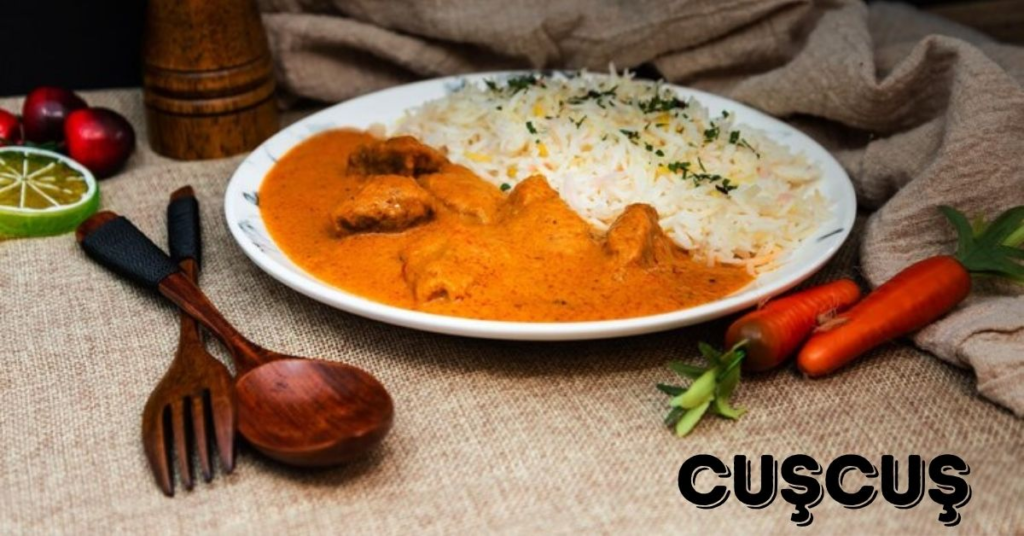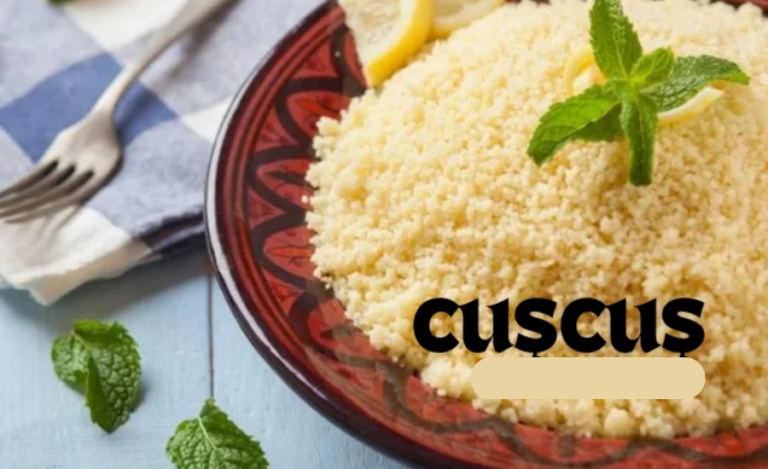Amidst the diverse flavors of North African cuisine lies Cuşcuş, a dish that has effortlessly crossed cultural and geographical boundaries to become a global favorite. Revered for its adaptability and deep-rooted cultural heritage, Cuşcuş has earned a special place in the hearts and kitchens of food lovers around the world. Whether you are a culinary connoisseur or just beginning to explore new tastes, discovering the unique charm of Cuşcuş can elevate your cooking adventures to a whole new level.
In this article, we delve into the fascinating history and cultural significance of Cuşcuş, tracing its journey from a staple in North African households to an international culinary star. We’ll uncover the evolution of Cuşcuş over the centuries, highlighting its transformation from a simple dish made with basic ingredients to a beloved gourmet choice. Additionally, we’ll share creative ways to incorporate Cuşcuş into your meals, allowing you to savor its delightful textures and flavors. From its modest beginnings to its recognition as a sophisticated delicacy, Cuşcuş exemplifies how the most unassuming ingredients can craft remarkable culinary experiences.
The Roots and Evolution of Cuşcuş

Cuşcuş has a rich history that dates back centuries, with its origins believed to be among the Berber communities of North Africa. Historians suggest that this iconic dish emerged between the 11th and 13th centuries and became a fundamental part of the Maghreb diet, particularly in regions like Algeria, Morocco, and Tunisia. The name “Cuşcuş” is thought to be derived from the Berber term “seksu,” which translates to “well-rolled” or “rounded,” reflecting the dish’s unique preparation method of rolling tiny granules of semolina wheat by hand.
Initially, Cuşcuş was a staple food for the Berbers, but its popularity quickly spread across North Africa, and it eventually made its way to Europe through the Moors. Over time, each region developed its distinctive interpretation of Cuşcuş, enriching the dish with local flavors, ingredients, and cooking techniques. Today, Cuşcuş serves as a culinary canvas, allowing for endless variations that celebrate its adaptability and cultural significance, from traditional recipes that honor its ancient roots to modern twists that appeal to contemporary tastes.
Cultural Importance and Ceremonial Role of Cuşcuş
In North African societies, Cuşcuş transcends its role as a staple food and is deeply embedded in the cultural, social, and ceremonial fabric of everyday life. Beyond its nutritional value, Cuşcuş is often the centerpiece of special occasions like weddings, religious celebrations, and family gatherings, where it symbolizes unity and community. Preparing and sharing Cuşcuş is seen as a communal act that strengthens social ties and fosters a sense of belonging.
The process of making Cuşcuş is traditionally a labor of love, often involving multiple family members who each contribute to its preparation. This collaborative effort not only fills the stomach but also feeds the spirit, reflecting values of hospitality, generosity, and togetherness. In many cultures, the act of offering Cuşcuş is more than just serving a meal; it is a gesture of goodwill, symbolizing blessings, abundance, and a wish for prosperity.
Exploring the Varieties of Cuşcuş

Cuşcuş comes in a wide range of varieties, each reflecting the unique flavors and cooking traditions of its region. In Morocco, for instance, Cuşcuş is often paired with a vibrant seven-vegetable stew, creating a dish that is not only visually appealing but also rich in flavor, thanks to a blend of spices like cumin, coriander, and ginger. This Moroccan version of Cuşcuş is celebrated for its aromatic qualities and the way it balances sweet and savory elements.
In Algeria, Cuşcuş often takes on a heartier character, frequently served with tender cuts of lamb or chicken, and infused with warming spices such as saffron, cinnamon, and turmeric. This version is known for its comforting, savory notes that make it a favorite during festive gatherings and family meals.
Tunisian Cuşcuş, meanwhile, stands out for its bold and spicy profile. It typically includes the fiery condiment harissa, which gives the dish a distinctive heat and depth. The Tunisian variation often incorporates seafood or merguez sausage, creating a flavor-packed dish that reflects the country’s love for intense, robust tastes.
These diverse regional takes on Cuşcuş highlight its adaptability and universal appeal, proving that while the core of Cuşcuş remains the same, its expression can vary widely, offering endless possibilities for creativity in the kitchen.
Nutritional Value and Health Benefits of Cuşcuş
Cuşcuş is much more than a flavorful addition to your meals; it’s also packed with essential nutrients that offer a range of health benefits. As a rich source of complex carbohydrates, Cuşcuş provides a steady release of energy, helping to keep you energized throughout the day. Its high fiber content supports healthy digestion by promoting regular bowel movements and contributing to a sense of fullness, which can be particularly helpful for those managing their weight.
Beyond its fiber and carbohydrate content, Cuşcuş is also loaded with important vitamins and minerals. It contains selenium, an antioxidant that plays a crucial role in protecting cells from damage and supports a healthy immune system. Additionally, it provides magnesium, which is essential for muscle function, nerve transmission, and bone strength, along with B vitamins that are key players in energy production and maintaining brain health.
By incorporating Cuşcuş into your diet, you’re not just enjoying a delicious meal; you’re also adding a nutritious ingredient that can help support your overall well-being. Whether as a base for savory stews, a side dish, or a salad ingredient, Cuşcuş offers a versatile way to enhance both the flavor and nutritional profile of your meals.
Cuşcuş in Modern Cuisine

Today, Cuşcuş has evolved into a cherished ingredient in contemporary kitchens, celebrated by both professional chefs and home cooks for its versatility. Its unique ability to absorb and complement a wide range of flavors makes it an ideal base for countless culinary creations, from hearty grain salads to refined main dishes. Cuşcuş effortlessly adapts to different dining settings, transitioning smoothly from a comforting family meal to an elegant centerpiece for a sophisticated dinner party.
Modern chefs are pushing the boundaries of tradition by experimenting with Cuşcuş in creative and unexpected ways. They’re blending classic North African cooking techniques with diverse global influences, such as incorporating Asian flavors or creating innovative plant-based dishes. This experimentation underscores Cuşcuş’s role as a versatile culinary canvas that welcomes a wide range of flavors and ingredients, making it a beloved staple in kitchens worldwide.
Tips for Cooking Perfect Cuşcuş
To achieve light, fluffy Cuşcuş, a few simple techniques can make all the difference. Start by using a wide, shallow bowl, spreading the grains out evenly to prevent clumping. Gently fluff the grains with your fingers or a fork to separate them, allowing for even steaming.
When cooking Cuşcuş, be mindful not to overcook it; this helps maintain its delicate, airy texture. Enhancing the flavor is easy—add a pinch of salt and a drizzle of olive oil, or try incorporating different spices and herbs, like cumin, parsley, or mint, to suit your taste preferences. The beauty of Cuşcuş lies in its forgiving nature and adaptability, so feel free to get creative and explore new flavor combinations.
Pairing Cuşcuş with Global Flavors
Cuşcuş’s remarkable versatility allows it to complement a diverse array of flavors from around the globe. In Mediterranean cuisine, it pairs wonderfully with grilled vegetables and crumbled feta cheese, creating a dish that’s both light and satisfying. The fresh, tangy notes of the feta blend harmoniously with the delicate texture of the Cuşcuş, resulting in a refreshing and well-rounded meal.
For a taste of the Middle East, consider combining Cuşcuş with spiced lamb and a dollop of creamy tzatziki. The rich, aromatic spices of the lamb enhance the nutty flavor of the Cuşcuş, while the cool, tangy tzatziki adds a refreshing contrast, making for a balanced and flavorful dish.
Exploring Asian-inspired Cuşcuş dishes opens up even more culinary possibilities. Try it with stir-fried vegetables and soy-glazed tofu for a delightful mix of textures and flavors. The savory soy glaze and crisp vegetables create a satisfying and hearty meal that highlights Cuşcuş’s ability to absorb and complement bold, vibrant flavors.
Regardless of your culinary inclinations, Cuşcuş can adapt to various global cuisines, making it a versatile choice that can cater to diverse tastes and dietary preferences. Its ability to blend seamlessly with different ingredients means you can always find a Cuşcuş pairing to match your cravings and expand your culinary horizons.
Hosting a Cuşcuş-Themed Dinner Party

For a memorable and distinctive dining event, hosting a Cuşcuş-themed dinner party is an excellent choice. Begin by creating a cozy and welcoming ambiance with vibrant decor inspired by North African traditions. Think rich textiles, colorful tableware, and ambient lighting to set the stage for an immersive experience.
Present a diverse array of Cuşcuş dishes, each offering a unique combination of flavors and ingredients. This could include traditional options such as Cuşcuş with spiced lamb or vegetable stew, as well as creative takes like Cuşcuş salads with fresh herbs and citrus dressings. By offering a variety of preparations, you invite your guests to sample and enjoy different tastes and textures, encouraging a fun and exploratory dining experience.
To enhance the evening, pair your Cuşcuş dishes with traditional beverages. Serve refreshing mint tea for a touch of authenticity or offer Moroccan wines to complement the complex flavors of the meal. This thoughtful approach not only enriches the dining experience but also provides a comprehensive taste of North African cuisine.
By focusing on diverse dishes and a culturally immersive setting, your Cuşcuş-themed dinner party will not only impress your guests but also offer them an unforgettable culinary journey.
Cuşcuş for Special Dietary Requirements
Cuşcuş is a highly adaptable dish that can be customized to suit a range of dietary preferences and restrictions. For individuals adhering to a gluten-free diet, alternatives such as cornmeal or other gluten-free grains can be used instead of traditional wheat-based Cuşcuş. These substitutions maintain a similar texture while accommodating those with gluten sensitivities.
Vegetarians can enjoy Cuşcuş by incorporating a variety of plant-based ingredients. Try pairing it with roasted vegetables, hearty legumes, and plant-based proteins like chickpeas or tofu to create a nutritious and satisfying meal. This versatility allows Cuşcuş to be a delicious component of a vegetarian diet.
For those following a low-carb regimen, Cuşcuş can still be included in moderation. Adjusting portion sizes and combining it with plenty of non-starchy vegetables, such as leafy greens or bell peppers, can help keep the carbohydrate content in check while still providing a flavorful and enjoyable meal option.
With a bit of creativity and thoughtful ingredient choices, Cuşcuş can be adapted to fit virtually any dietary plan, making it a versatile and inclusive choice for various nutritional needs.
Discovering Cuşcuş Beyond the Dinner Plate
Cuşcuş isn’t just limited to savory dishes; it can also shine in sweet culinary creations. For a comforting dessert, try making Cuşcuş pudding by combining it with milk, honey, and a touch of cinnamon. This sweet twist on Cuşcuş adds warmth and richness, perfect for a cozy treat. Enhance the texture and flavor by incorporating dried fruits like raisins or apricots and adding a handful of nuts for a delightful crunch.
Additionally, Cuşcuş can be a surprising ingredient in baking, bringing a unique twist to traditional cakes and pastries. Experiment with incorporating Cuşcuş into your favorite baked goods to discover how its subtle flavor and texture can elevate your recipes. Whether you’re adding it to muffins for added moisture or using it as a base for a creative pie crust, Cuşcuş offers endless possibilities to explore in your culinary endeavors.
With its versatility extending beyond the dinner table, Cuşcuş can transform both sweet and savory dishes, inviting you to experiment and expand your cooking repertoire.
Summary
Cuşcuş, a beloved North African dish, has transcended regional boundaries to become a global culinary favorite. Its journey from a staple food in Berber communities to an international gourmet delight showcases its versatility and rich cultural heritage. In this article, we explore the history, cultural significance, and evolution of Cuşcuş, illustrating how this humble grain has adapted to various global cuisines and modern culinary trends.
The article delves into Cuşcuş’s origins among the Berber people, its spread across North Africa, and its introduction to Europe. It highlights the dish’s ceremonial importance in North African culture, where it symbolizes unity and community. Various regional adaptations, from Moroccan seven-vegetable stew to Tunisian spicy harissa, reveal Cuşcuş’s wide appeal and adaptability.
Nutritionally, Cuşcuş offers significant health benefits, including energy-providing carbohydrates, fiber for digestion, and essential vitamins and minerals. In contemporary kitchens, Cuşcuş is celebrated for its versatility, suitable for both savory and sweet dishes. Tips for cooking Cuşcuş to perfection, pairing it with global flavors, and hosting a Cuşcuş-themed dinner party provide practical advice for enjoying this versatile grain.
Finally, Cuşcuş’s adaptability extends to special dietary needs, making it suitable for gluten-free, vegetarian, and low-carb diets. Its potential in sweet creations and baking further underscores its flexibility.
FAQs
1. What is Cuşcuş?
Cuşcuş is a traditional North African dish made from steamed semolina wheat granules. It is known for its versatility and is enjoyed both as a savory side dish and a base for various main courses.
2. Where did Cuşcuş originate?
Cuşcuş originated with the Berber communities of North Africa. Historians trace its development to between the 11th and 13th centuries, with the name “Cuşcuş” derived from the Berber word “seksu,” meaning “well-rolled” or “rounded.”
3. How has Cuşcuş evolved over time?
Cuşcuş began as a staple food in North Africa and has since spread to various regions, including Europe. Different cultures have adapted Cuşcuş with local ingredients and flavors, creating a wide range of regional variations.
4. What is Cuşcuş’s role in North African culture?
In North African cultures, Cuşcuş is more than just a food item; it holds significant cultural and ceremonial value. It is often served during special occasions such as weddings, religious festivals, and family gatherings, symbolizing unity and hospitality.
5. What are some popular variations of Cuşcuş?
Popular variations of Cuşcuş include the Moroccan version served with a seven-vegetable stew, Algerian Cuşcuş with lamb or chicken and spices, and Tunisian Cuşcuş featuring harissa and seafood or sausages.
6. What are the nutritional benefits of Cuşcuş?
Cuşcuş is rich in carbohydrates, providing energy and fiber for digestive health. It also contains essential vitamins and minerals like selenium, magnesium, and B vitamins, contributing to overall well-being.
Stay in the loop for upcoming updates and alerts Vents Buzz
